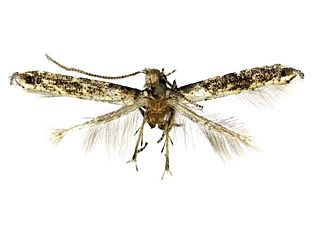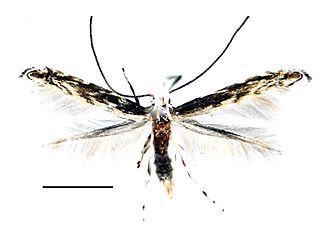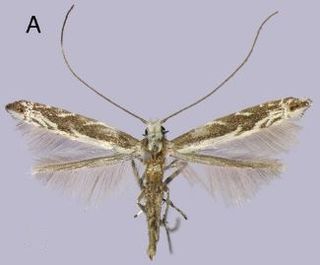| Epicephala parasitica | |
|---|---|
 | |
| Scientific classification | |
| Domain: | Eukaryota |
| Kingdom: | Animalia |
| Phylum: | Arthropoda |
| Class: | Insecta |
| Order: | Lepidoptera |
| Family: | Gracillariidae |
| Genus: | Epicephala |
| Species: | E. anthophilia |
| Binomial name | |
| Epicephala anthophilia Kawakita A, Kato M, 2016 | |
Epicephala anthophilia is a moth of the family Gracillariidae. It is found on the Ryukyu Archipelago.

The wingspan is 5.7–7.5 mm. The forewings of the females are dark brown with a narrow white band on the dorsum from the base to 1/4 of the entire length, medially with a narrow white band extending from the costa to the dorsum and with a pair of narrow white bands beginning at the costal and dorsal margin near 2/3 of the wing and extending obliquely toward the wing apex, terminating before reaching mid-width of the wing. There is a narrow silver band with metallic reflection extending from the costa to the dorsum at 5/6 length and the distal 1/6 is brown with a black dot centrally. The distal end is fringed with a narrow white band and terminating with a narrow black band. The hindwings of the females are dark brown. The forewings of the males are brown with a narrow white band on the dorsum from the base to 2/3 of the entire length and with three pairs of narrow white bands beginning at the costal and dorsal margin near 1/2 to 3/4 length of the wing and extending obliquely toward the wing apex, terminating before reaching mid-width of the wing. There is a narrow silver band with metallic reflection extending from the costa to the dorsum at 5/6 length and the distal 1/6 is orange-brown with a black dot centrally, franked by a short white band near the dorsum. The distal end is fringed with a narrow white band and terminating with a narrow brown band. The hindwings of the males are brown.
The larvae feed on the seeds of Phyllanthus lepidocarpus .








